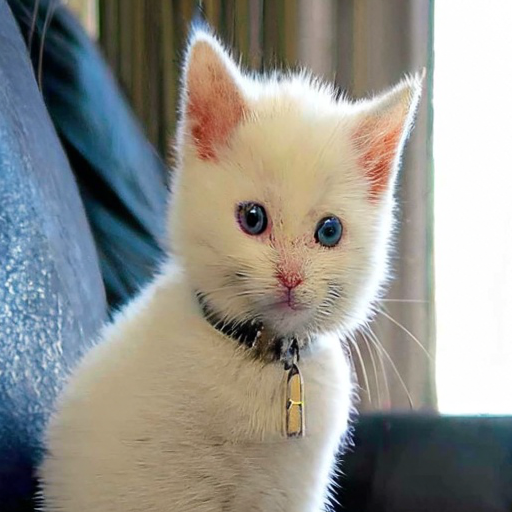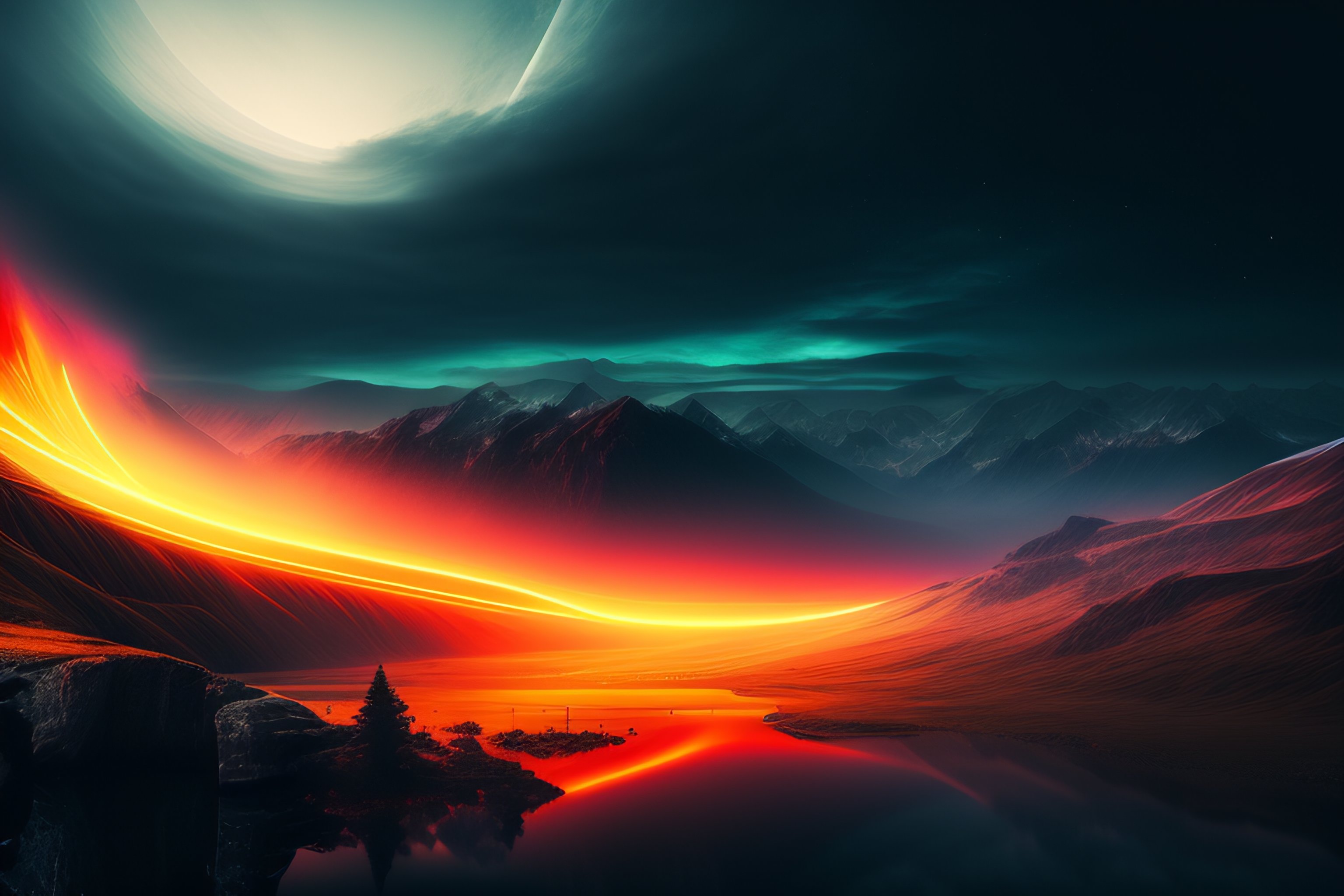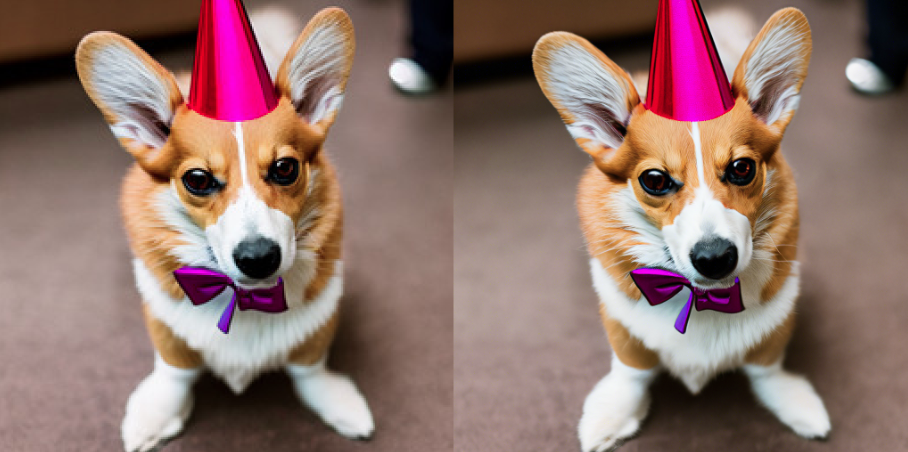stable-diffusion-x4-upscaler
Maintainer: lucataco

6

| Property | Value |
|---|---|
| Model Link | View on Replicate |
| API Spec | View on Replicate |
| Github Link | View on Github |
| Paper Link | View on Arxiv |
Create account to get full access
Model overview
The stable-diffusion-x4-upscaler is an AI model developed by Stability AI and maintained by lucataco. It is an implementation of the Stable Diffusion x4 upscaler model, which can be used to enhance the resolution of images. This model is similar to other Stable Diffusion-based models like stable-diffusion-inpainting, dreamshaper-xl-lightning, and pasd-magnify in its use of the Stable Diffusion framework.
Model inputs and outputs
The stable-diffusion-x4-upscaler model takes in a grayscale input image and a text prompt, and outputs an upscaled image. The input image can be scaled by a factor of up to 4, and the text prompt can be used to guide the upscaling process.
Inputs
- Image: A grayscale input image
- Scale: The factor to scale the image by, with a default of 4
- Prompt: A text prompt to guide the upscaling process, with a default of "A white cat"
Outputs
- Output: The upscaled image
Capabilities
The stable-diffusion-x4-upscaler model can be used to enhance the resolution of images while preserving the content and style of the original image. It can be particularly useful for tasks like enlarging low-resolution images or generating high-quality images from sketches or low-quality source material.
What can I use it for?
The stable-diffusion-x4-upscaler model can be used for a variety of image-related tasks, such as creating high-quality images for marketing materials, enhancing the resolution of family photos, or generating concept art for games and animations. The model's ability to preserve the content and style of the original image makes it a versatile tool for creative projects. Additionally, the model's maintainer, lucataco, has developed other Stable Diffusion-based models like dreamshaper-xl-lightning and pasd-magnify that may be of interest for similar use cases.
Things to try
One interesting aspect of the stable-diffusion-x4-upscaler model is its ability to generate high-quality images from low-resolution input. This can be particularly useful for tasks like restoring old photographs or creating high-quality images from sketches or low-quality source material. Additionally, experimenting with different text prompts can result in unique and creative upscaled images, allowing users to explore the model's capabilities in generating content-aware image enhancements.
This summary was produced with help from an AI and may contain inaccuracies - check out the links to read the original source documents!
Related Models

stable-diffusion-upscaler

3
stable-diffusion-upscaler is an AI model developed by Replicate creator jagilley that can upscale images using the Stable Diffusion model. This model builds upon the capabilities of the Stable Diffusion model, which can generate photo-realistic images from text prompts. The stable-diffusion-upscaler model can take an existing image and intelligently upscale it, increasing the resolution and detail while preserving the original content. Model inputs and outputs The stable-diffusion-upscaler model takes a variety of inputs that allow users to customize the upscaling process. These include the image to be upscaled, a scaling factor, the number of sampling steps, and optional prompts to guide the upscaling. The model then outputs an upscaled version of the input image. Inputs image**: The image to be upscaled scale**: The factor by which to scale the image steps**: The number of steps to take in the diffusion process prompt**: An optional text prompt to guide the upscaling decoder**: The decoder model to use sampler**: The sampling algorithm to use tol_scale**: The tolerance scale for the upscaling batch_size**: The batch size for processing num_samples**: The number of samples to generate guidance_scale**: The scale factor for guidance noise_aug_type**: The type of noise augmentation to apply noise_aug_level**: The level of noise augmentation Outputs Output**: The upscaled version of the input image Capabilities The stable-diffusion-upscaler model can take existing images and intelligently upscale them, increasing the resolution and detail while preserving the original content. This can be useful for a variety of applications, such as enhancing low-quality images, generating high-resolution versions of artwork or illustrations, or improving the visual quality of images for use in presentations, websites, or other media. What can I use it for? The stable-diffusion-upscaler model can be used in a variety of creative and practical applications. For example, you could use it to upscale and enhance low-resolution images, create high-quality versions of digital artwork or illustrations, or improve the visual quality of images for use in presentations, websites, or other media. Additionally, the model's ability to intelligently upscale images while preserving the original content could be useful in fields such as photography, video production, or digital design. Things to try One interesting aspect of the stable-diffusion-upscaler model is its ability to use text prompts to guide the upscaling process. By providing a relevant prompt, you can subtly influence the way the model upscales the image, potentially creating more visually appealing or relevant results. For example, you could try upscaling a landscape image with a prompt like "a lush, detailed forest scene" to see how the model incorporates that guidance into the upscaled output. Another interesting aspect of the model is its use of different decoders and samplers. By experimenting with these settings, you can potentially achieve different visual styles or levels of detail in the upscaled images. For example, you could try using the "finetuned_840k" decoder and the "k_dpm_adaptive" sampler to see how that combination affects the upscaling results.
Updated Invalid Date

stable-diffusion

108.2K
Stable Diffusion is a latent text-to-image diffusion model capable of generating photo-realistic images given any text input. Developed by Stability AI, it is an impressive AI model that can create stunning visuals from simple text prompts. The model has several versions, with each newer version being trained for longer and producing higher-quality images than the previous ones. The main advantage of Stable Diffusion is its ability to generate highly detailed and realistic images from a wide range of textual descriptions. This makes it a powerful tool for creative applications, allowing users to visualize their ideas and concepts in a photorealistic way. The model has been trained on a large and diverse dataset, enabling it to handle a broad spectrum of subjects and styles. Model inputs and outputs Inputs Prompt**: The text prompt that describes the desired image. This can be a simple description or a more detailed, creative prompt. Seed**: An optional random seed value to control the randomness of the image generation process. Width and Height**: The desired dimensions of the generated image, which must be multiples of 64. Scheduler**: The algorithm used to generate the image, with options like DPMSolverMultistep. Num Outputs**: The number of images to generate (up to 4). Guidance Scale**: The scale for classifier-free guidance, which controls the trade-off between image quality and faithfulness to the input prompt. Negative Prompt**: Text that specifies things the model should avoid including in the generated image. Num Inference Steps**: The number of denoising steps to perform during the image generation process. Outputs Array of image URLs**: The generated images are returned as an array of URLs pointing to the created images. Capabilities Stable Diffusion is capable of generating a wide variety of photorealistic images from text prompts. It can create images of people, animals, landscapes, architecture, and more, with a high level of detail and accuracy. The model is particularly skilled at rendering complex scenes and capturing the essence of the input prompt. One of the key strengths of Stable Diffusion is its ability to handle diverse prompts, from simple descriptions to more creative and imaginative ideas. The model can generate images of fantastical creatures, surreal landscapes, and even abstract concepts with impressive results. What can I use it for? Stable Diffusion can be used for a variety of creative applications, such as: Visualizing ideas and concepts for art, design, or storytelling Generating images for use in marketing, advertising, or social media Aiding in the development of games, movies, or other visual media Exploring and experimenting with new ideas and artistic styles The model's versatility and high-quality output make it a valuable tool for anyone looking to bring their ideas to life through visual art. By combining the power of AI with human creativity, Stable Diffusion opens up new possibilities for visual expression and innovation. Things to try One interesting aspect of Stable Diffusion is its ability to generate images with a high level of detail and realism. Users can experiment with prompts that combine specific elements, such as "a steam-powered robot exploring a lush, alien jungle," to see how the model handles complex and imaginative scenes. Additionally, the model's support for different image sizes and resolutions allows users to explore the limits of its capabilities. By generating images at various scales, users can see how the model handles the level of detail and complexity required for different use cases, such as high-resolution artwork or smaller social media graphics. Overall, Stable Diffusion is a powerful and versatile AI model that offers endless possibilities for creative expression and exploration. By experimenting with different prompts, settings, and output formats, users can unlock the full potential of this cutting-edge text-to-image technology.
Updated Invalid Date

stable_diffusion2_upscaling

7
The stable_diffusion2_upscaling model is an image super-resolution model based on the Stable Diffusion 2 architecture. It can be used to upscale low-resolution images by a factor of 4, preserving important details and producing high-quality, photorealistic results. This model is similar to other Stable Diffusion-based models like Stable Diffusion, Stable Diffusion Upscaler, and Stable Diffusion x4 Upscaler, but is specifically focused on the high-resolution upscaling task. Model inputs and outputs The stable_diffusion2_upscaling model takes a low-resolution image as input and outputs a high-resolution version of the same image, upscaled by a factor of 4. The model is designed to preserve important details and maintain a photorealistic appearance in the upscaled output. Inputs input_image**: The low-resolution image to be upscaled, provided as a URI. ddim_steps**: The number of denoising steps to use during the upscaling process, with a default of 50 and a range of 2 to 250. ddim_eta**: The upscale factor, with a default of 0 and a range of 0 to 1. seed**: An integer seed value to control the randomness of the upscaling process. Outputs Output**: An array of one or more high-resolution images, represented as URIs. Capabilities The stable_diffusion2_upscaling model can take low-resolution images and significantly increase their resolution while preserving important details and maintaining a photorealistic appearance. This can be useful for tasks such as enhancing product images, upscaling old photographs, or creating high-quality visualizations from low-res sources. What can I use it for? The stable_diffusion2_upscaling model can be used in a variety of applications that require high-resolution images, such as: E-commerce**: Upscaling product images to improve the visual appeal and detail for customers. Photography**: Enhancing old or low-quality photographs to create high-quality prints and digital assets. Graphic design**: Generating high-resolution images for use in designs, presentations, or marketing materials. Video production**: Upscaling low-res footage or animation frames to improve visual quality. Things to try Some interesting things to try with the stable_diffusion2_upscaling model include: Experimenting with different ddim_steps and ddim_eta values to find the optimal balance between speed and quality. Applying the model to a variety of image types, from natural scenes to abstract art, to see how it handles different visual styles. Combining the upscaling model with other Stable Diffusion models, such as the Stable Diffusion Inpainting or Stable Diffusion Img2Img models, to create even more powerful image generation and manipulation workflows.
Updated Invalid Date

dreamshaper-xl-lightning

59
dreamshaper-xl-lightning is a Stable Diffusion model that has been fine-tuned on SDXL, as described by the maintainer lucataco. It is similar to other models like AnimateDiff-Lightning: Cross-Model Diffusion Distillation, moondream2, Juggernaut XL v9, and DeepSeek-VL: An open-source Vision-Language Model, which are all fine-tuned or derived from Stable Diffusion. Model inputs and outputs The dreamshaper-xl-lightning model takes a variety of inputs, including a prompt, image, mask, seed, and various settings for the image generation process. The outputs are one or more generated images. Inputs Prompt**: The text prompt that describes what the model should generate. Image**: An input image for img2img or inpaint mode. Mask**: An input mask for inpaint mode, where black areas will be preserved and white areas will be inpainted. Seed**: A random seed, which can be left blank to randomize. Width and Height**: The desired size of the output image. Scheduler**: The algorithm used for image generation. Num Outputs**: The number of images to generate. Guidance Scale**: The scale for classifier-free guidance. Apply Watermark**: Whether to apply a watermark to the generated images. Negative Prompt**: Additional text to guide the generation away from unwanted content. Prompt Strength**: The strength of the prompt when using img2img or inpaint. Num Inference Steps**: The number of denoising steps to perform. Disable Safety Checker**: Whether to disable the safety checker for generated images. Outputs One or more generated images, returned as URIs. Capabilities dreamshaper-xl-lightning can generate a wide variety of images based on text prompts, including realistic portraits, fantastical scenes, and more. It can also be used for img2img and inpainting tasks, where the model can generate new content based on an existing image. What can I use it for? The dreamshaper-xl-lightning model could be used for a variety of creative and artistic applications, such as generating concept art, illustrations, or even product visualizations. It could also be used in educational or research contexts, for example, to explore how AI models interpret and generate visual content from text. Things to try One interesting thing to try with dreamshaper-xl-lightning would be to experiment with the various input settings, such as the prompt, seed, and image size, to see how they affect the generated output. You could also try combining it with other AI models, such as those from the Replicate creator lucataco, to see how the different capabilities can be leveraged together.
Updated Invalid Date